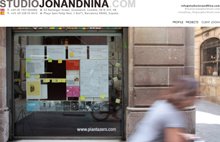The Caravan Village Għadira, MaltaI always find it amusing that Maltese people have Summerhouses in Malta. How far away could you possibly ever be from the sea? (Not more than a 15-20 minute drive)... Or from your Winterhouse? (Not more than a 40 minute drive).

To the north of the island, by one of the largest sandy beaches, there's a Caravan Village. Every Summer around 200 families move to this
green neighbourhood, and every Summer they repaint their homes (they must do, because the paintwork is pristine) in various, particular shades of pea green (pea-soup, frozen-peas, pea-pie, pastizzi pea, fresh peas, mushy-peas,...)


I find myself drawn to its mysterious existence in such a prime location and its well-kept,
favela-like style. I've never seen such well-kept shacks anywhere else in the world, surely this is some sort of monument to the house-proud Maltese people.

This would be a great location for a Wes Anderson film, there are so many Wes Anderson-style shots to be taken...

Originally people used to camp on the beaches during the Summer. Eventually they were cleared (for “hygienic purposes”) to their present site, across the road. What started out as a small group of campers grew into its present size without much objection, because this helped increase the number of local supporters for the then government. Today the Caravan Village has water, electricity, its own church, saint and festa - the fundamental requirements of any Maltese town or village.

Most people hate the place. Whenever I ask about it the response is always of the same kind: angry, mumbled remarks about its very existence being an example of the failings of the Maltese Government and MEPA (the planning authority). In my opinion they have signed off much worse things, I think this is an example of how interesting architecture without architects and planners could be. The residents have a much better flare for design than I’ve ever seen MEPA show – they understand concepts like matching colours, building heights, continuity in neighbouring facades – concepts that the Planning Authority of Malta clearly still struggle to understand.

More proof to help back up my favourite argument - Down with the Planning Authority... Lets just go for complete Planning Anarchy! That way
everybody can do whatever they want, and not just those with political weight or money. I’m sure some interesting things will be born of Planning Anarchy, and besides when I look around the island I don’t really feel like we have anything to lose…

 In traditional Maltese town houses there is a wide threshold defined by the main door, antiporta, lace curtains, door-steps and chairs on the street outside. This blurs the boundary between the interior and the exterior of a house, between the public realm and private realm.
In traditional Maltese town houses there is a wide threshold defined by the main door, antiporta, lace curtains, door-steps and chairs on the street outside. This blurs the boundary between the interior and the exterior of a house, between the public realm and private realm.
























































